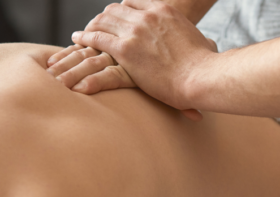Does Massage Promote Muscle Recovery?

The art of massage therapy is nearly as old as human civilization. Archaeological evidence of massage being performed has been discovered within tombs in Egypt and in the Tigris valley of the ancient Mesopotamians which date as far back as 2000 years BCE.
It was even mentioned in Homer’s Odyssey as a way to relax the tired limbs of warriors and help the treatment of wounds.
Fast forward to 2021 and we are still using massage for these same purposes although with a much better understanding of how and why it works.
Massage is used as a tool for relaxation and muscle recovery by people from all walks of life worldwide. From the professional athlete with a personal massage therapist to the Vietnamese construction worker having sidewalk cupping therapy after a backbreaking day, they have all realized the inherent benefits of massage on the body.
THE FACTS
Massage has been scientifically proven to be a great addition to the toolkit of a healthy and active lifestyle. Combining different techniques such as: Effleurage(1), petrissage(2), tapotement(3), friction, and vibration yields great results when used to treat stiff, sore or damaged muscle tissue.
Having your muscles massaged releases tension in the tissue that blocks blood from flowing freely to provide fresh nutrients and remove waste such as built up lactic acid. It realigns damaged muscle fibres so they can heal properly. For injuries there are several treatments that may cut healing times. Massage can also positively affect performance and mental well being which often go hand in hand.
It is recommended to apply massage therapy for 15-30 minutes within 2 hours of exercise to maximise the benefits of the treatment. This window of time is optimal as the muscles will be in recovery mode and it is also the time when the most lactic acid is present which needs to be flushed out in order to facilitate a quick and pain-free recovery. Failing to cleanse your muscles of lactic acid leads to an increase in DOMS(4) which is not only painful but also slows your recovery and hinders your hard earned progress.
The best way to do this is by combining a cool-down exercise such as a light jog or aerobics before massaging the muscle groups that have been worked. A combination of Effleurage Tapotement and Petrissage are the recommended techniques to clear lactic acid and decrease DOMS.
Further benefits include improved flexibility, performance and recovery from injuries. These effects can be achieved by using different combinations of techniques for different amounts of time.
CONCLUSION
Massage has been used by humans throughout known history to help muscles recover and will continue to do so for a long time to come. It is a great part of a healthy lifestyle and by using the techniques mentioned above, you can be your own muscle therapist after every workout session. A great tool to bring with you that is always ready to use is an electronic massage gun. It can help you with hard to reach areas and to give consistent results on the go.

We strongly recommend massage for muscle recovery, so treat yourself or book in with a massage therapist in your area. You will notice the difference!
You can also check out our other posts about Benefits of Heat Therapy (e.g. Neck & Shoulder Wrap), Home Remedies for Headache, Remedial Massage Therapy, Yoga, Stretching and improving your Posture, which will have an addition impact on your health.



